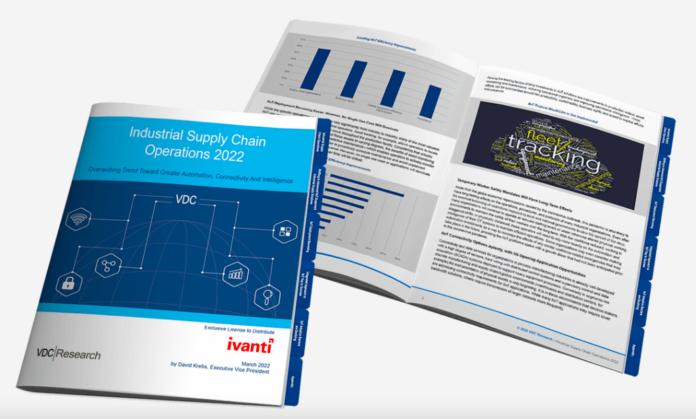There is an overarching trend towards greater automation, connectivity and intelligence in industrial supply chain operations, a joint report from Ivanti Wavelink and VDC Research revealed.
For industrial organisations, IIoT platforms offer significant promise to unlock new business models, deliver improved customer experiences, address the disruptive impact of downtime and ultimately provide greater operational resilience.
VDC fielded a global survey among operations technology decision makers spanning multiple industries including retail, manufacturing, transportation/logistics, aerospace and defense, utilities and mining, oil and gas organisations. The survey was fielded during the third and fourth quarters of 2021 and included 205 qualified respondents.
VDC Research EVP David Krebs said that over the past 10 years, products and channels have proliferated, late-stage customisation requirements have increased, the number of temperature environments has grown and warehouse employee turnover has remained high with access to labour at an all-time low.
“The COVID-19 pandemic has intensified these challenges and as a result, manufacturers and distributors are urgently seeking new ways to optimise services and react to future market changes faster and more efficiently,” said Krebs. “IIoT can help organisations automate processes, improve performance and reduce inefficiencies, leading to higher revenues and lower costs.”
The leading factors driving IIoT investments are improvements to production output (27%), improvements to asset monitoring and maintenance (14%), reductions to operational expenses (14%) and improvements to operational intelligence (13%).
These efforts can be summarised around key productivity, sustainability, business agility and speed to market efforts and initiatives. Organisations are also taking advantage of key technology trends that have significantly lowered the adoption barrier of IIoT solutions.
These trends include improvements to IIoT platform functionality and ease of use, simplified development of IIoT applications through access to APIs and established communications protocols, lowered costs of sensors and data storage and the development of edge computing that shift computation from the cloud to the shop floor.
However, while many industrial organisations are underway with IIoT pilots, challenges still exist with few organisations fully scaling up their IIoT-enabled solutions. Various technical and organisational factors are typically at the root of these issues.
Technical headwinds range from dealing with heterogeneous systems, determining which functions are supported by which applications, how the systems should be deployed and how these solutions manage security requirements.
Organisationally, IT vis-a-vis OT governance is an oft-cited source of conflict as is the challenge of failing to adjust business processes to encourage broader application and failing to fully realise the solution’s value.
“The bottom line is that industrial supply chain operations overall are moving forward on the IIoT technology maturity curve,” said Brandon Black, SVP and general manager at Ivanti Wavelink.
“Maximising IIoT’s value requires the commitment of leadership to ensure that IIoT is not just an IT initiative, but an organisation-wide effort,” said Black.
















